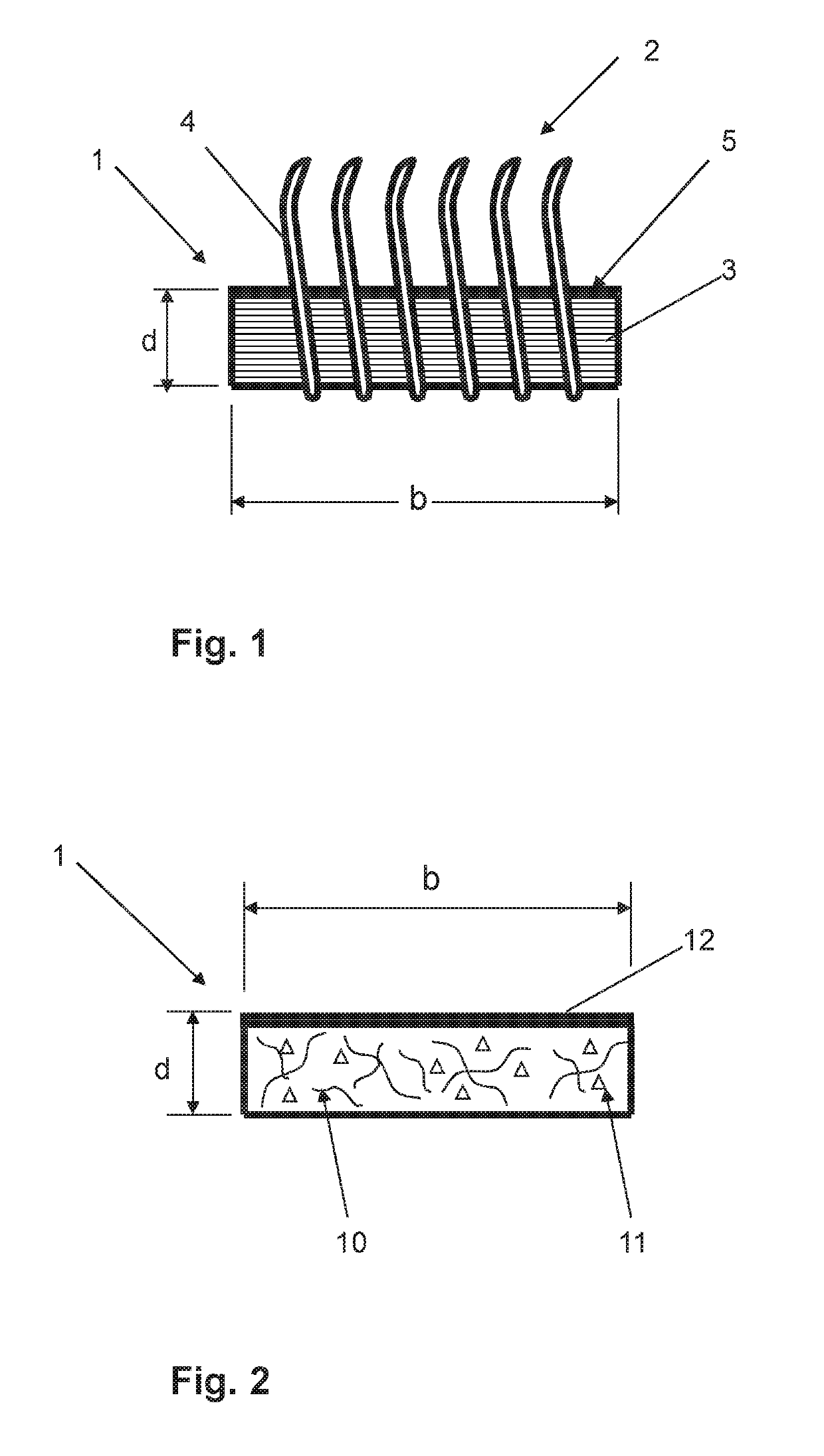Clothing carrier
a cloth carrier and clothing technology, applied in the field of cloth carriers, can solve the problems of over-tearing of clothing, excessive play of clothing tips in the clothing carrier, and relative weak return forces of clothing tips, so as to improve the roughness of the surface, reduce the adhesion of dirt, and improve the effect of sliding
- Summary
- Abstract
- Description
- Claims
- Application Information
AI Technical Summary
Benefits of technology
Problems solved by technology
Method used
Image
Examples
Embodiment Construction
[0039]Reference will now be made to the embodiments of the invention, one or more examples of which are shown in the drawings. Each embodiment is provided by way of explanation of the invention, and not as a limitation of the invention. For example features illustrated or described as part of the one embodiment can be combined with another embodiment to yield still another embodiment. It is intended that the present invention include these and other modifications and variations to the embodiments described herein.
[0040]A known clothing carrier 1 having an inserted flexible clothing 2 is shown in FIG. 1. The clothing carrier 1 is composed of multiple woven textile layers 3 which are held together by means of binding agents or by vulcanization with rubber or synthetic rubber. In addition to the textile layers 3, a rubber layer 5 is provided as a cover layer 5. The wire hooks 4 pierced through the clothing carrier 1 are held in the multi-layered fabric 3. The wire hooks 4 are greatly l...
PUM
| Property | Measurement | Unit |
|---|---|---|
| length | aaaaa | aaaaa |
| density | aaaaa | aaaaa |
| thickness | aaaaa | aaaaa |
Abstract
Description
Claims
Application Information
 Login to View More
Login to View More - R&D
- Intellectual Property
- Life Sciences
- Materials
- Tech Scout
- Unparalleled Data Quality
- Higher Quality Content
- 60% Fewer Hallucinations
Browse by: Latest US Patents, China's latest patents, Technical Efficacy Thesaurus, Application Domain, Technology Topic, Popular Technical Reports.
© 2025 PatSnap. All rights reserved.Legal|Privacy policy|Modern Slavery Act Transparency Statement|Sitemap|About US| Contact US: help@patsnap.com

